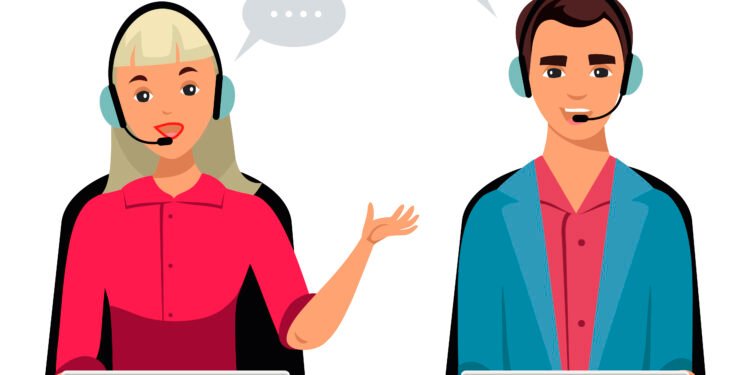In today’s fast-paced world, the ability to listen actively is a skill that is often underestimated and overlooked. Many businesses focus on marketing strategies, product development, and sales techniques, while neglecting one of the most fundamental aspects of customer satisfaction: truly understanding their customers. Active listening is a powerful tool that can help businesses gain valuable insights, build stronger relationships with their customers, and ultimately, drive success. In this blog, we will explore the importance of active listening and how it can be used to better understand your customers.
The Basics of Active Listening
Active listening is not just about hearing words; it’s about genuinely comprehending the message being conveyed. It involves a deep level of engagement and a commitment to understanding the speaker’s perspective. When applied to customer interactions, active listening means paying full attention to what your customers are saying, processing their words, and responding in a way that demonstrates your understanding.
Here are some key elements of active listening:
- Focus and Attention: When a customer is speaking, give them your undivided attention. Put away distractions, such as your phone or computer, and maintain eye contact to show that you are fully engaged in the conversation.
- Empathy: Try to understand the customer’s emotions and feelings. Empathizing with their situation helps you connect on a deeper level.
- Avoid Interrupting: Refrain from interrupting the customer, even if you think you know the solution to their problem. Let them finish speaking before you respond.
- Clarification: If you’re uncertain about something the customer said, ask clarifying questions to ensure you fully comprehend their message.
- Summarization: Periodically summarize what the customer has said to confirm your understanding and show that you’re actively listening.
Why Active Listening Matters in Business
Now that we’ve established what active listening is, let’s delve into why it is so essential in the business world, particularly when it comes to understanding your customers.
- Building Trust: Active listening helps build trust with your customers. When they feel heard and understood, they are more likely to trust your business and continue doing business with you. Trust is the foundation of strong customer relationships.
- Solving Problems Effectively: By actively listening, you can identify and address the customer’s needs more effectively. This can lead to quicker problem resolution and greater customer satisfaction.
- Customer Retention: When customers feel valued and understood, they are more likely to remain loyal to your brand. They are less likely to seek out competitors who may provide a similar product or service.
- Valuable Feedback: Customers are an invaluable source of feedback for your business. By actively listening to their comments, complaints, and suggestions, you can gain insights into areas that need improvement and make necessary adjustments.
- Personalization: Understanding your customers on a deeper level allows you to provide more personalized and tailored solutions. This can lead to increased customer loyalty and higher lifetime value.
Active Listening Techniques for Understanding Customers
Now that we understand the importance of active listening in business, let’s explore some practical techniques to apply this skill when interacting with customers.
- Paraphrasing: One effective technique is to paraphrase what the customer has said. Repeat their main points in your own words to confirm your understanding. For example, you can say, “So, if I understand correctly, you’re experiencing [customer’s issue], and it’s affecting [customer’s concern]. Is that right?”
- Reflective Listening: Reflective listening involves mirroring the customer’s emotions and feelings. For example, if a customer is frustrated, you can respond by saying, “I can hear how frustrated you are with this situation.”
- Open-Ended Questions: Encourage customers to share more by asking open-ended questions that require more than a yes or no response. This can help uncover deeper insights. For instance, instead of asking, “Is everything okay?” you can ask, “Can you tell me more about what’s been going on?”
- Nonverbal Cues: Pay attention to nonverbal cues such as body language, facial expressions, and tone of voice. These can provide valuable information about the customer’s emotions and state of mind.
- Silence: Don’t be afraid of silence in a conversation. Sometimes, customers need a moment to gather their thoughts or emotions. Allowing for brief pauses can be a powerful aspect of active listening.
The Role of Active Listening in Various Business Functions
Active listening is not limited to customer support or sales teams. It plays a crucial role in various aspects of business, contributing to the overall success of an organization.
- Customer Service: Customer service representatives who actively listen can address customer issues more effectively, leading to improved customer satisfaction and loyalty.
- Sales and Marketing: Active listening helps sales and marketing professionals understand customer needs and preferences, enabling them to tailor their pitches and campaigns to better resonate with the target audience.
- Product Development: Actively listening to customer feedback and suggestions can guide product development. Creating products that meet customer needs is a recipe for success.
- Leadership and Management: Effective leaders actively listen to their teams, fostering better communication, employee morale, and problem-solving within the organization.
- Conflict Resolution: Active listening is a critical component of conflict resolution. It helps in de-escalating tense situations and finding mutually acceptable solutions.
Challenges and Pitfalls to Avoid
While active listening is a valuable skill, it’s important to be aware of potential challenges and pitfalls that may hinder your ability to understand customers effectively:
- Assumptions: Assuming you know what the customer needs or wants without asking can lead to misunderstandings. Always verify and clarify.
- Impatience: Rushing through a conversation or trying to solve a problem too quickly can hinder active listening. Take your time to truly understand the customer’s perspective.
- Distractions: External distractions or multitasking during a customer interaction can show disinterest and impede your ability to listen actively.
- Bias: Be mindful of your biases and preconceptions. They can influence how you interpret what the customer is saying. Try to approach each conversation with an open mind.
- Failure to Follow Through: Active listening is most valuable when you act on the insights gained. Make sure to follow through on any promises or commitments made during the conversation.
Conclusion
In the world of business, active listening is an often-underestimated skill that can make a profound difference in understanding and serving customers. By practicing active listening techniques, you can build trust, solve problems more effectively, retain loyal customers, and gain valuable insights into your business. It’s not just a skill; it’s an art that, when mastered, can set your business apart and drive success. So, the next time you interact with a customer, remember that the key to understanding them lies in your ability to listen actively and empathetically.


















